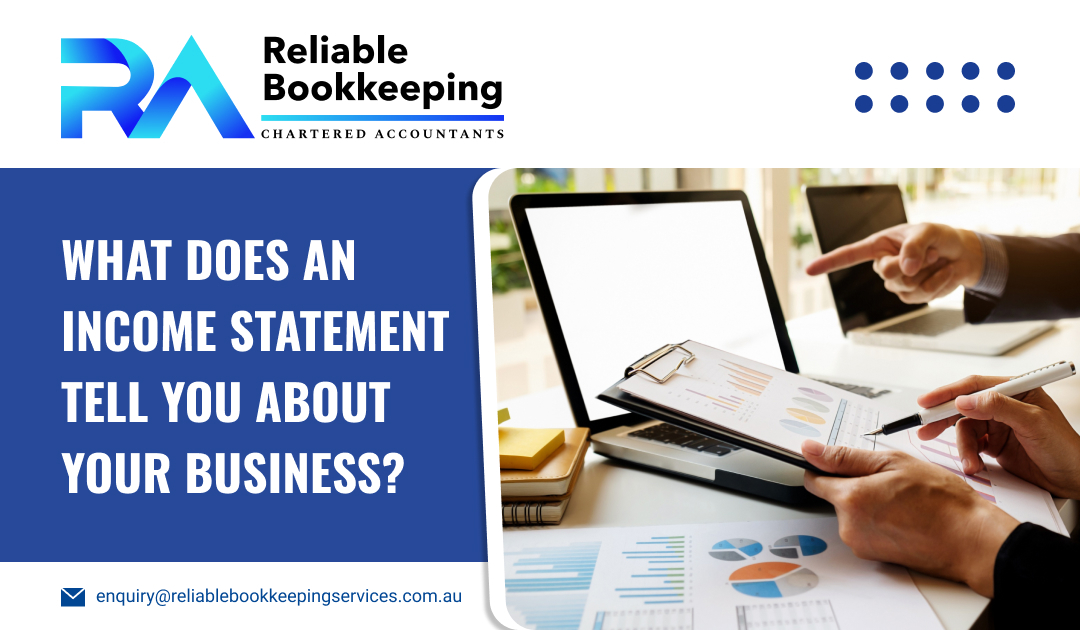You did not start your business to do accounting. You started it because you wanted to follow your passion and earn a living from it. But just like those “Terms and Conditions” we often skip but really should read, learning about income statements is something you cannot avoid as a business owner.
So, what does an income statement tell you? An income statement shows how much money your business earned, how much it spent, and what was left over during a specific time period. It clearly breaks down your business’s financial performance. It includes your revenue, the cost of the goods or services you sold (COGS), gross profit, operating expenses, operating income, and net income.
What does a profit and loss statement show you?
You are already aware that the profit and loss statement will show your total expenses and revenue, along with whether your business was making a profit during a specific time period. However, what else can an income statement show you? At the end of the day, an income statement helps you with your taxes.
An income statement is crucial in checking your break-even point and in scenario planning. It is also crucial because it shows your business model’s viability, and it provides a lot of important information for reducing extra costs and maximising revenue in the long term.
What is included in an income statement?
An income statement generally includes the following:
- Information about business sales or revenue
- The cost of goods sold or cost of sales
- Costs associated with general, selling, and administrative costs
- Advertising and marketing costs
- Expenses associated with technology
- Interest expense
- Tax liabilities for a specific time period
- The net income of the company
As a business owner, you must be ready with financial statements, BAS statements, and other important documents that will be used during tax season. The calculation of every aspect must be accurate, for instance, if you don’t know how to calculate BAS, you can ask your bookkeeper or accountant to do it for you.
How to read profit and loss statements?
An income statement, also known as a profit and loss (P&L) statement, is a financial report that outlines your business’s performance over a given period, indicating whether it has generated a profit or incurred a loss. Here’s a breakdown of its key components:
Revenue
Sales or revenue is the money that you bring in by selling goods or services. Your revenue in the profit and loss statement shows the total turnover for the set time period. It should include revenue earned through primary business activity, and non-operating revenue and gains. If you are unfamiliar with what you should include in your income statement, you can reach out to a Melbourne bookkeeper or an accountant.
Cost of goods sold
It shows the total cost for the services or products you offer to your customers. It only includes charges associated with your services or products, such as labour costs, manufacturing, and materials.
Gross profit margin
Your gross profit margin indicates the income you make for every dollar earned minus the cost of goods sold. It doesn’t account for taxes, general expenses, or overheads.
Operating expenses
These are your selling, administrative, and general expenses incurred while running your business during a specific time period. Examples include payroll, rent, utilities, and other things you have to pay to run your business. You must also include non-cash expenses, such as depreciation.
Operating income
It indicates your earnings prior to interest, depreciation, taxes, and so on. You must subtract your operating expenses from your gross profit, which allows you to calculate your operating income.
Net profit
This refers to the total amount you have earned after subtracting all expenses. Just deduct your total expenses from your gross profit to obtain your net profit.
To conclude, we can say that every business must have accurate financial statements, and these statements are often used by tax return accountants when they file your tax return
Conclusion
As a business owner, you must be ready with all essential documents, including financial statements, to ensure accurate information at the time of tax season. To ensure your every record is correct, you can get reliable bookkeeping services.

